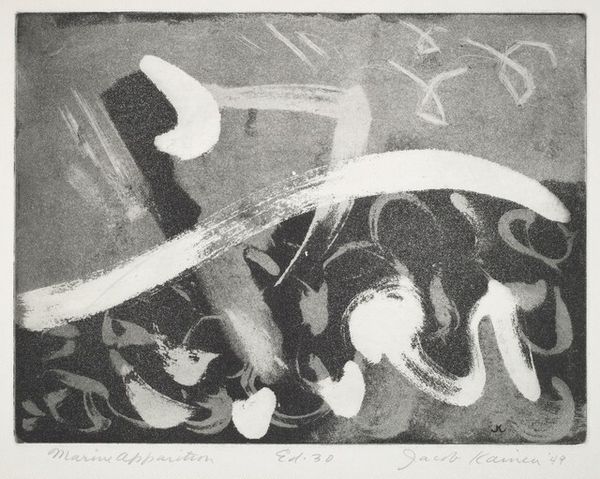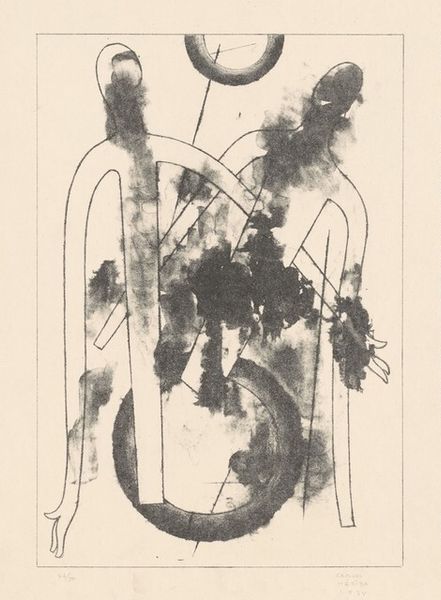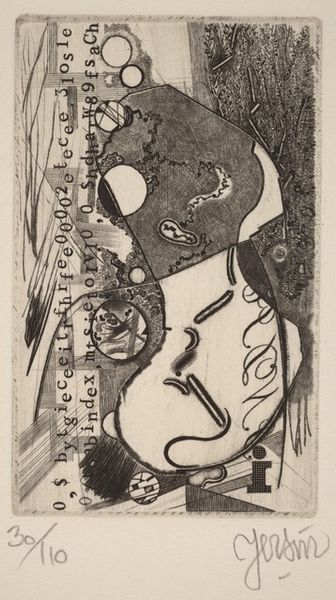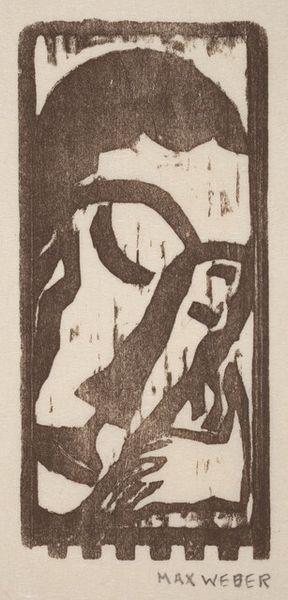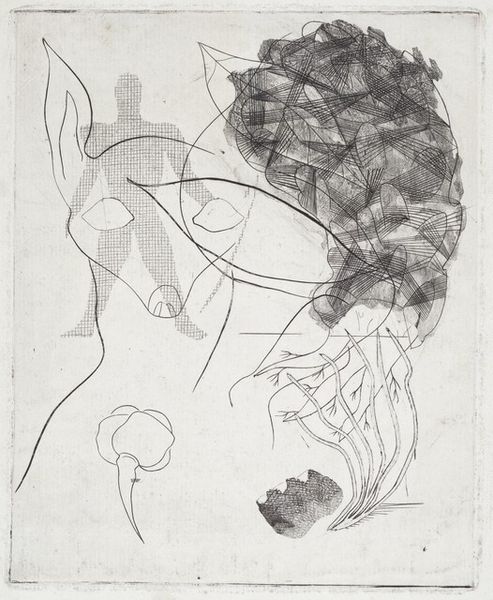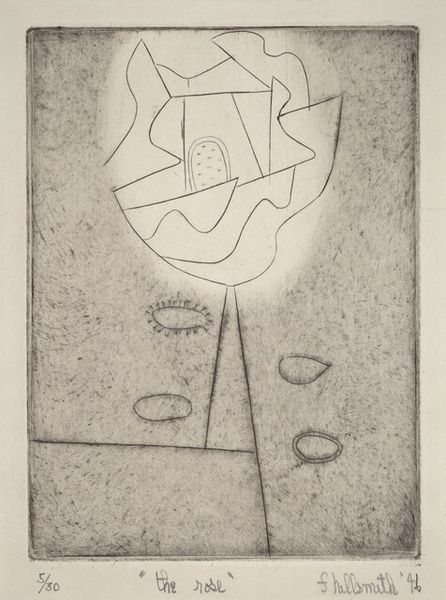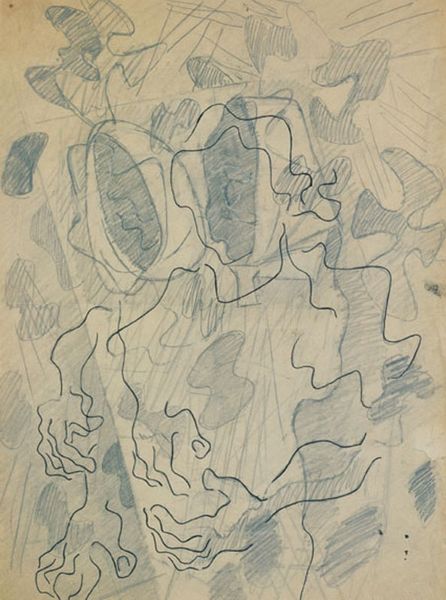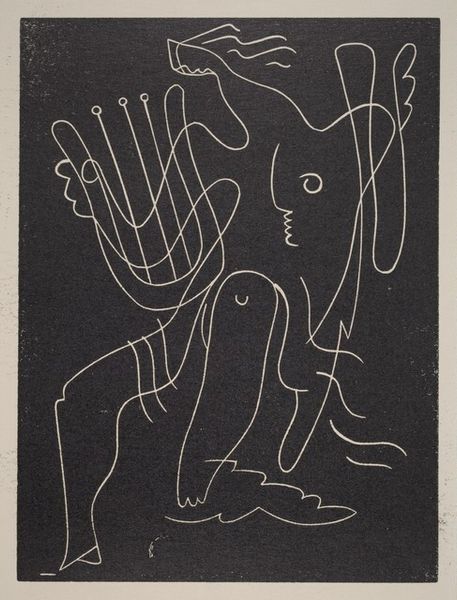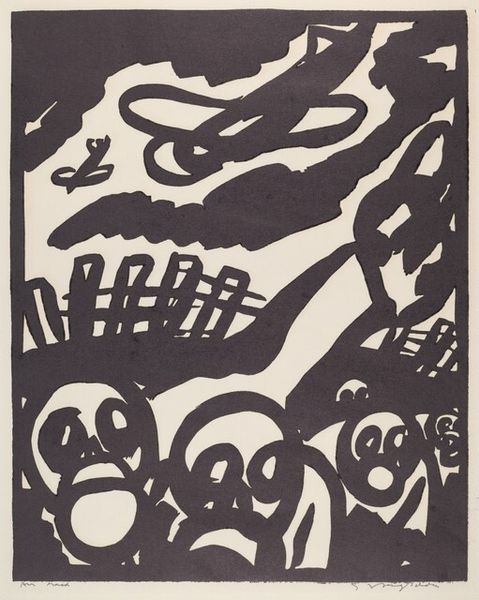
Dimensions: plate: 17.8 × 13.7 cm (7 × 5 3/8 in.) sheet: 27.9 × 22.5 cm (11 × 8 7/8 in.)
Copyright: National Gallery of Art: CC0 1.0
Paul Klee made this etching, Never Ending, in 1930. It shows how industrial printmaking processes can be used to create highly imaginative results. This work was made by incising lines into a metal plate, inking the surface, and then running it through a press. The labor-intensive process of etching, requiring careful control of acid and timing, stands in contrast to Klee's whimsical, almost childlike imagery. Note how the grainy aquatint texture adds depth and atmosphere, softening the hard lines of the etched figures, which are reminiscent of sea creatures or playful organisms. Klee's choice of printmaking is also significant, reflecting a desire to make his art accessible to a wider audience, in line with the socialist ideals prevalent in the Bauhaus movement, where he taught. This etching represents an intriguing intersection of craft, design, and fine art.
Comments
No comments
Be the first to comment and join the conversation on the ultimate creative platform.




